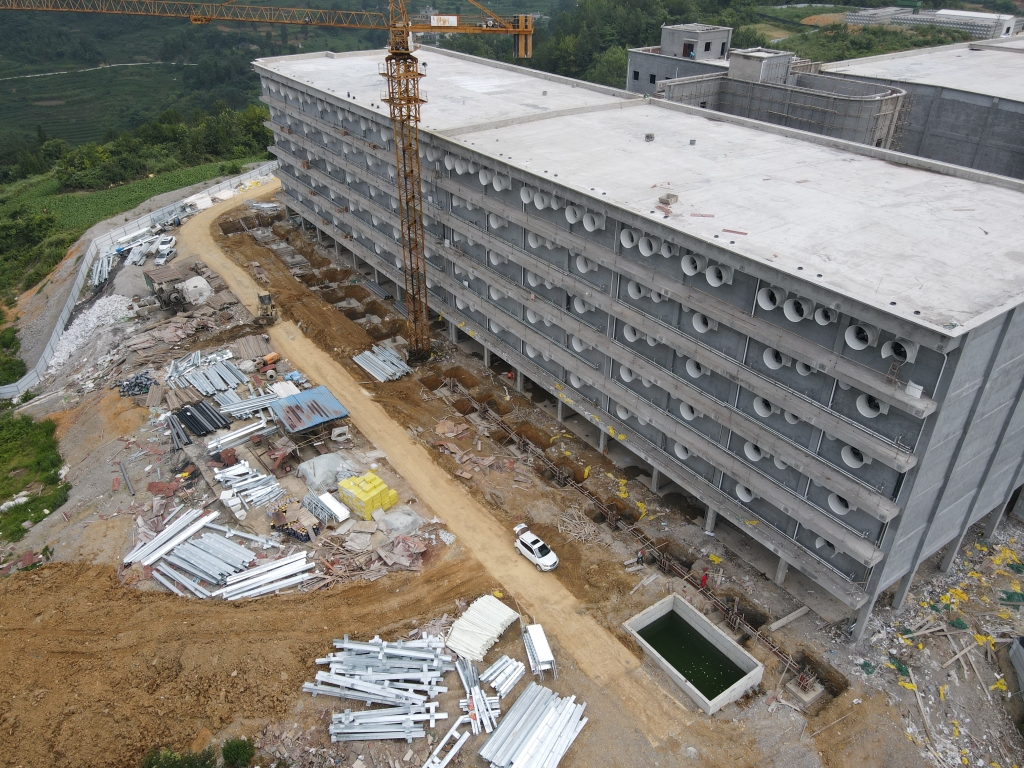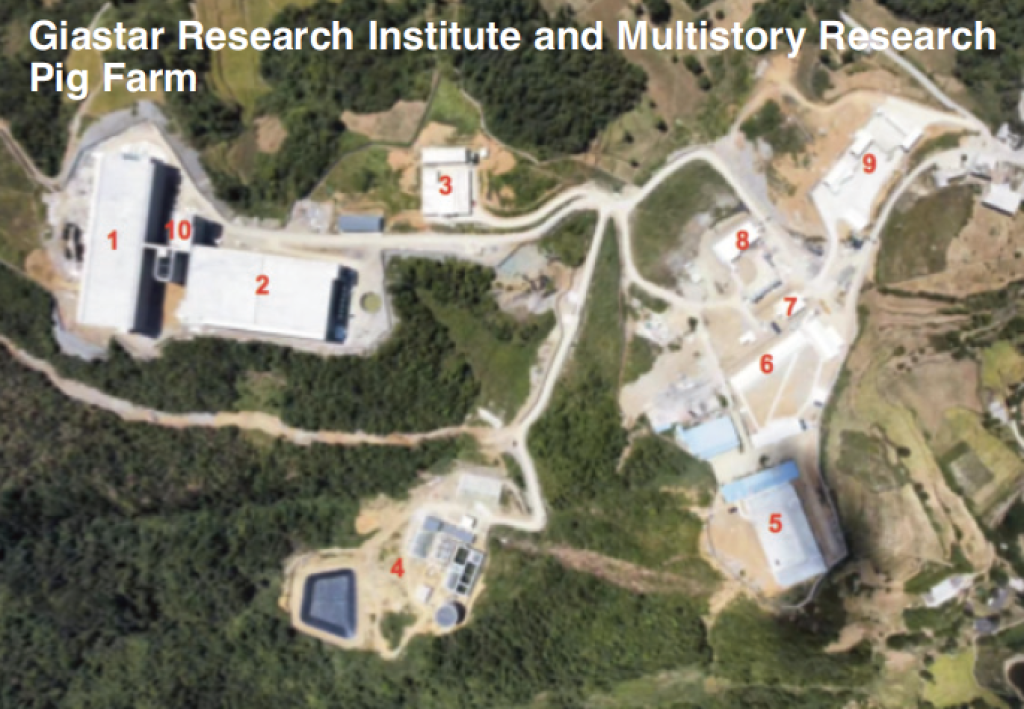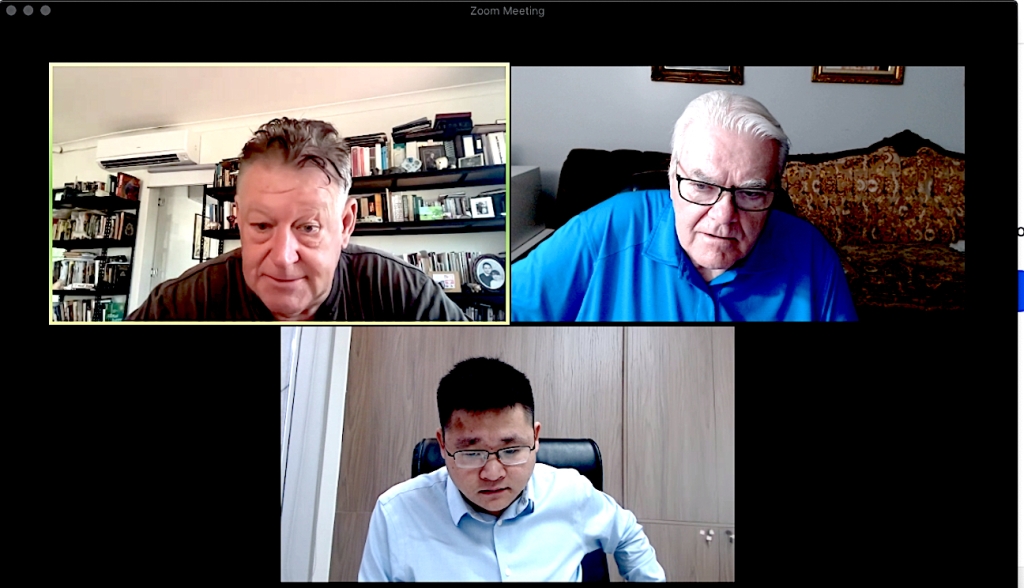
In a recent Zoom call, two veterinarians, one from China and the other from Brisbane, Australia, talked about African Swine Fever and pig buildings going up instead of spreading further on the ground.
Dr. John Carr a world livestock consultant, veterinarian, and lecturer, several years ago mentored Dr. Nanfang (Avery) Zeng of the Giastar Agro-pastoral Co., Ltd one of the larger pig farms in China. Here Dr. Zeng is the deputy director of the Giastar Research Institute.
Dr. Zeng decided to return to the pig farming companies and joined Giastar Agro-pastoral Co. in 2021, a listed company in China which is no small feat.
He works as a vet with established research institute departments and focuses on different paths.
“We divided the research into several parts, veterinary medicine, nutrition and feeding, environmental protection and breeding.”
The group includes a team of more than 20 veterinarians all with master’s degrees, all working with customers to improve the situation of pig farming in their company.
When asked to comment on the state of the hog industry in China talking about ASF becomes political.
“Frankly, [ASF] has changed the pig industry of China. Before we brought the swine fever, people didn’t care about biosecurity.”

3. Water treatment, filtration and disinfection.
4.Manure treatment. 5. Internal living area. 6. External living area.
Loading area. 8. Isolation/Quarantine area. 9. Truck cleaning &
disinfection & Heating. 10. Pig movement pathways for each floor.
When ASF came, people began to focus on biosecurity and changed the minds of people farming in China. So the barn’s location will become most important to find the right place in the forest far from the city or town on the top of the mountain to have that building or farm to keep better biosecurity.
“It changed the farm’s location and the way the people stay on the farm because now in China we care much more about the biosecurity and much more about the risk of the people, the biosecurity risk of people.”
Pig farm workers stay on farms in China for more than one month, two months, three months, or even five months.
“It is unbelievable in America to see those who work this day, back home, and tomorrow, the next day.”
Biosecurity changing the way of pig farming takes it to the next level: the multi-story farm or pig hotel allowing for quick expansion and good farm income.
Dr. Zeng outlined three advantages of going up instead of sideways on the farm. Dr. Carr said in an earlier article, “The future of farming will be in buildings, not on farms.”
Expensive farmland is a driving force in China. Locating somewhere in the mountains and not requiring much land and building multi-stories.
“And to have the land, we have a lot of work to do and it’s costly. So people are trying to have less land and more pigs, making the multi-story farm happen.”
The first advantage is to make full use of the land. The second advantage of a multi-story farm is biosecurity.
“John always told me for us vets, we need to walk around the farm, especially around the fences for them every week just to know what happens or what is the risk,” said Dr. Zeng. “In Chinese terms, they think if they have the multi-story farm, just because the parameter is not that large, control is much better.”

Dr. Zeng said an example in Guangzhou province a company called Yanshou. They had the multi-story farm many years before and it stayed free of ASF during the very, very essential periods.
The third advantage is part of better management, meaning it is a large facility with only doors or fences for dispatching, cleaning and receiving feed and supplies and dispatching pigs and manure. And it can be much better to control movement and biosecurity.
The third advantage in part is also about optimizing the allocation of materials or the construction of roads any other things.
“When we use these roads or use these materials just for a hog farm, if there are dividers in several places it takes much more, lot of more work and more people. The allocation, the people for the use of the materials or the resources.”
Dr. Carr said scale is what matters. “If we can control the pathogens, then we can grow and scale up these farms by putting on multi-stories.” •
— By Harry Siemens






